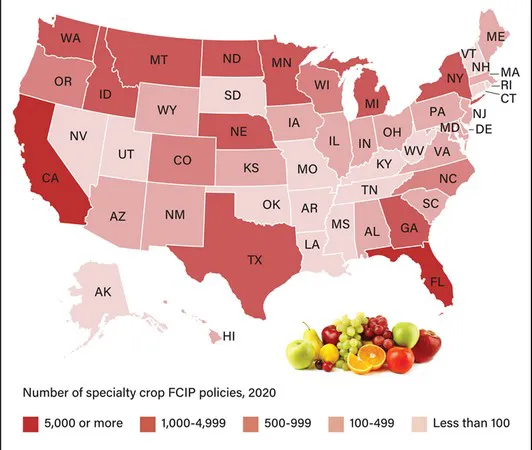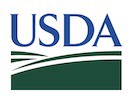The USDA offers various risk management products to specialty crop farmers through the Federal Crop Insurance Program (FCIP). FCIP policies can mitigate risks by providing payments if insured crops experience losses caused by naturally occurring events (such as weather-related conditions) and market conditions. Specialty crops are a commodity group that includes fresh or dried fruits; tree nuts; vegetables; pulse crops such as dry beans, peas, and lentils; and horticulture nursery crops.

Number of FCIP specialty crop policies, 2020.
California led the country in FCIP policies for specialty crops in 2020 (19,433), followed by Florida (5,060), Washington (4,233), North Dakota (3,860), and Minnesota (2,526). These States also produce the most fruits and vegetables (California, Florida, and Washington) and specialty field crops (North Dakota and Minnesota). California’s policies reflect the variety of specialty crops produced in the State, including almonds, grapes, oranges, walnuts, and raisins. Most North Dakota policies cover field crops—dry beans and dry peas.
In 2020, specialty crops accounted for 25 percent of the value of U.S. crop production. This chart appears in the USDA Economic Research Service bulletin Specialty Crop Participation in Federal Risk Management Programs, published in September 2022.
For more information:  U.S. Department of Agriculture
U.S. Department of Agriculture
+1 202 720 2791
askusda@usda.gov
www.usda.gov
